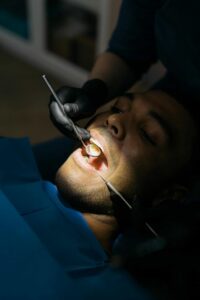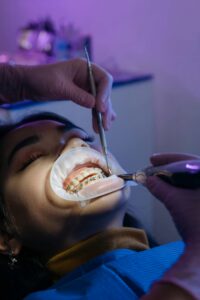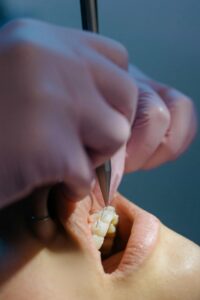A confident smile goes a long way. For orthodontic patients, understanding what an ideal teeth bite looks like is crucial not only for aesthetic reasons but also for overall oral health.
But what exactly constitutes an ideal bite, and why is it so important?
In this blog post, we will explore everything you need to know about achieving and maintaining the perfect bite.
Defining the Ideal Bite
Let’s start with basics and define what the ideal teeth bite is. How are teeth supposed to sit and how should your teeth line up?
An ideal bite is more than just straight teeth. It involves the proper alignment of teeth, jaw positioning, and balanced bite force. Your upper and lower teeth should fit together seamlessly without crowding or spacing issues.
Additionally, your jaws should be in harmony with each other, ensuring that bite force is evenly distributed.
An ideal bite should also allow for proper function, such as chewing and speaking, without any discomfort or strain.
Alignment of Teeth
Proper alignment means that your upper teeth slightly overlap your lower teeth, and the points of your molars fit the grooves of the opposing molars. This natural fit minimizes wear and tear on your teeth and ensures efficient chewing.
Role of Bite Force
Balanced bite force is essential for maintaining teeth and jaw integrity. If your bite force is uneven, it can lead to issues like tooth wear, jaw pain, and even temporomandibular joint (TMJ) disorders.
The Impact of an Ideal Bite
A proper bite has numerous benefits for your oral health. It reduces the risk of tooth decay and gum disease by preventing food particles from getting trapped in misaligned teeth. It also minimizes the likelihood of jaw pain and headaches caused by uneven bite forces.
Overall Well-Being
An ideal teeth bite also contributes to overall well-being by making eating, speaking, and even breathing easier.
When your bite is properly aligned, you can chew food more efficiently, which aids digestion and enhances nutrient absorption.
Effectiveness of Orthodontic Treatments
Achieving an ideal bite maximizes the effectiveness of orthodontic treatments. It ensures that the corrective measures taken by your orthodontist are long-lasting and provide the desired results.
Common Bite Issues
Now that we have established the importance of an ideal bite, let’s look at some common issues that can affect it.
- Overbite/Underbite: When the upper or lower teeth protrude beyond the ideal alignment.
- Crossbite: When one or more upper teeth sit inside the lower teeth instead of outside.
- Open bite: When there is a gap between the upper and lower front teeth when biting down.
- Crowding/Spacing: When there isn’t enough room for all your teeth to fit comfortably, or when there are gaps between teeth due to missing or misaligned teeth.
Diagnosing and Treating Bite Issues
If you suspect that you have a bite issue, it is essential to consult an orthodontist for a thorough diagnosis. They will examine your teeth and jaw using X-rays, photographs, and physical examinations to determine the severity of the problem.
Once diagnosed, your orthodontist will develop a personalized treatment plan to correct the issue. This may involve wearing braces or clear aligners like Invisalign® to gradually move your teeth into their ideal position.
In some cases, additional appliances like elastics or expanders may also be necessary to achieve an optimal bite.
Tips for Maintaining an Ideal Bite
There are 4 main ways you can continue to maintain an ideal bite.
1. Oral Hygiene
Maintaining excellent oral hygiene is crucial for preserving your ideal bite. Brush and floss regularly to keep your teeth and gums healthy. Using mouthwash can also help eliminate bacteria that cause oral health issues.
2. Diet
A balanced diet can contribute to maintaining your ideal bite. Avoid sugary and acidic foods that can damage your teeth. Instead, opt for a diet rich in fruits, vegetables, and dairy products to keep your teeth strong and healthy.
3. Follow-Up Care
Regular follow-up appointments with your orthodontist are essential for maintaining your ideal bite. These check-ups allow your orthodontist to monitor your progress and make any necessary adjustments to your treatment plan.
4. Wear Retainers
After completing your orthodontic treatment, it is crucial to wear retainers as directed by your orthodontist. This helps keep your teeth in their ideal position and prevents any relapse.
Conclusion
Understanding and achieving an ideal teeth bite is crucial for orthodontic patients. It not only enhances your smile but also improves your overall oral health and well-being.
If you’re looking to achieve the perfect bite, consult with us here at A Winning Smile Orthodontics.
Our team of experts, led by Dr. Catherine Scheurer McDevitt, is committed to helping you achieve a healthy and confident smile. Schedule your consultation today and take the first step towards a brighter, more beautiful smile!





